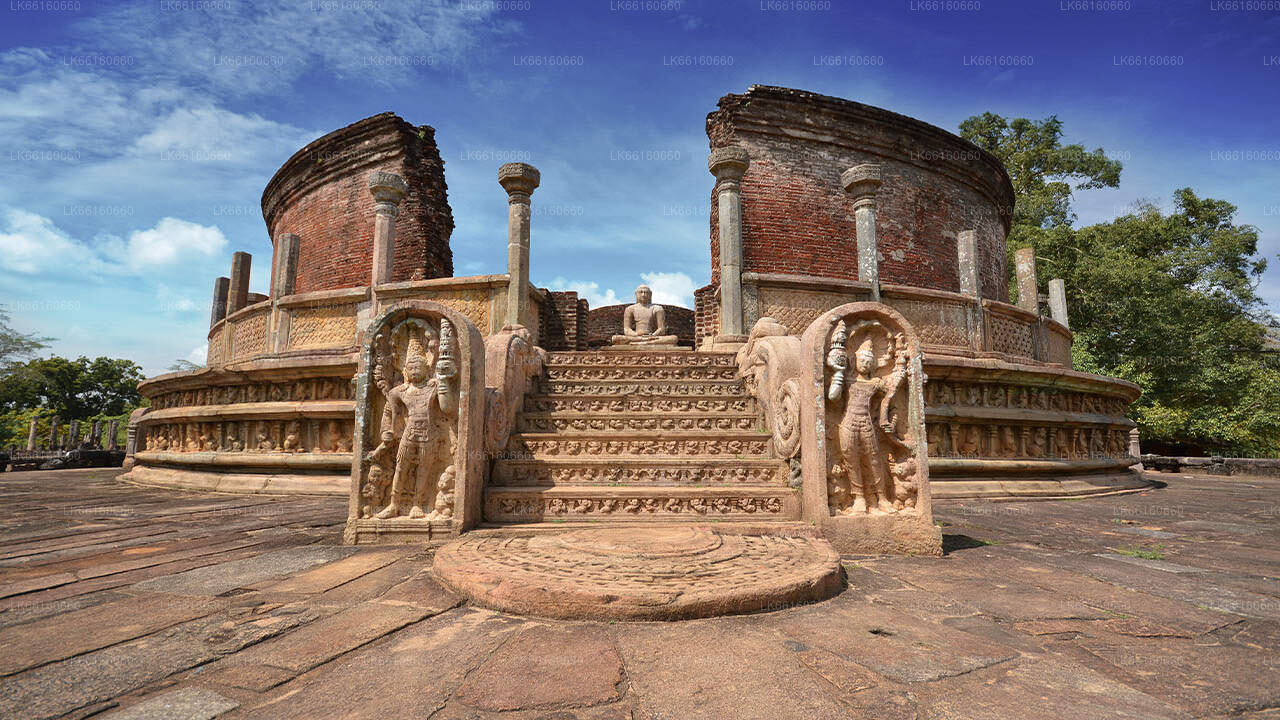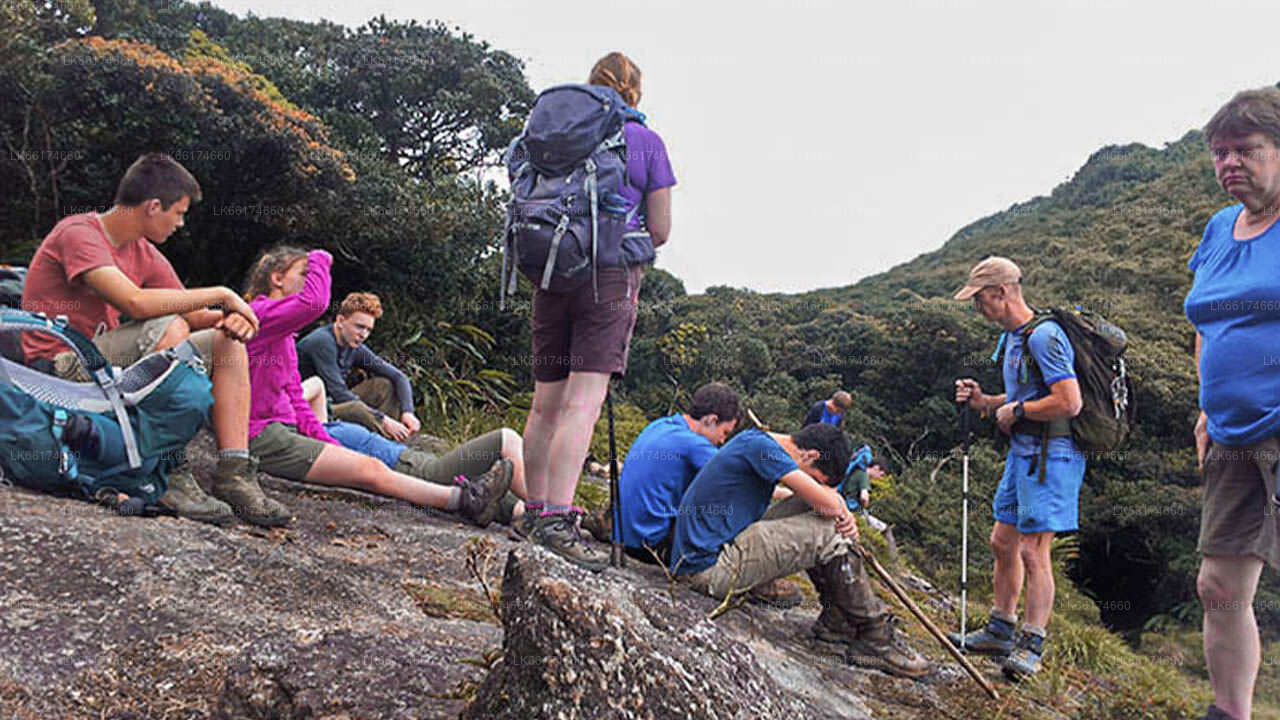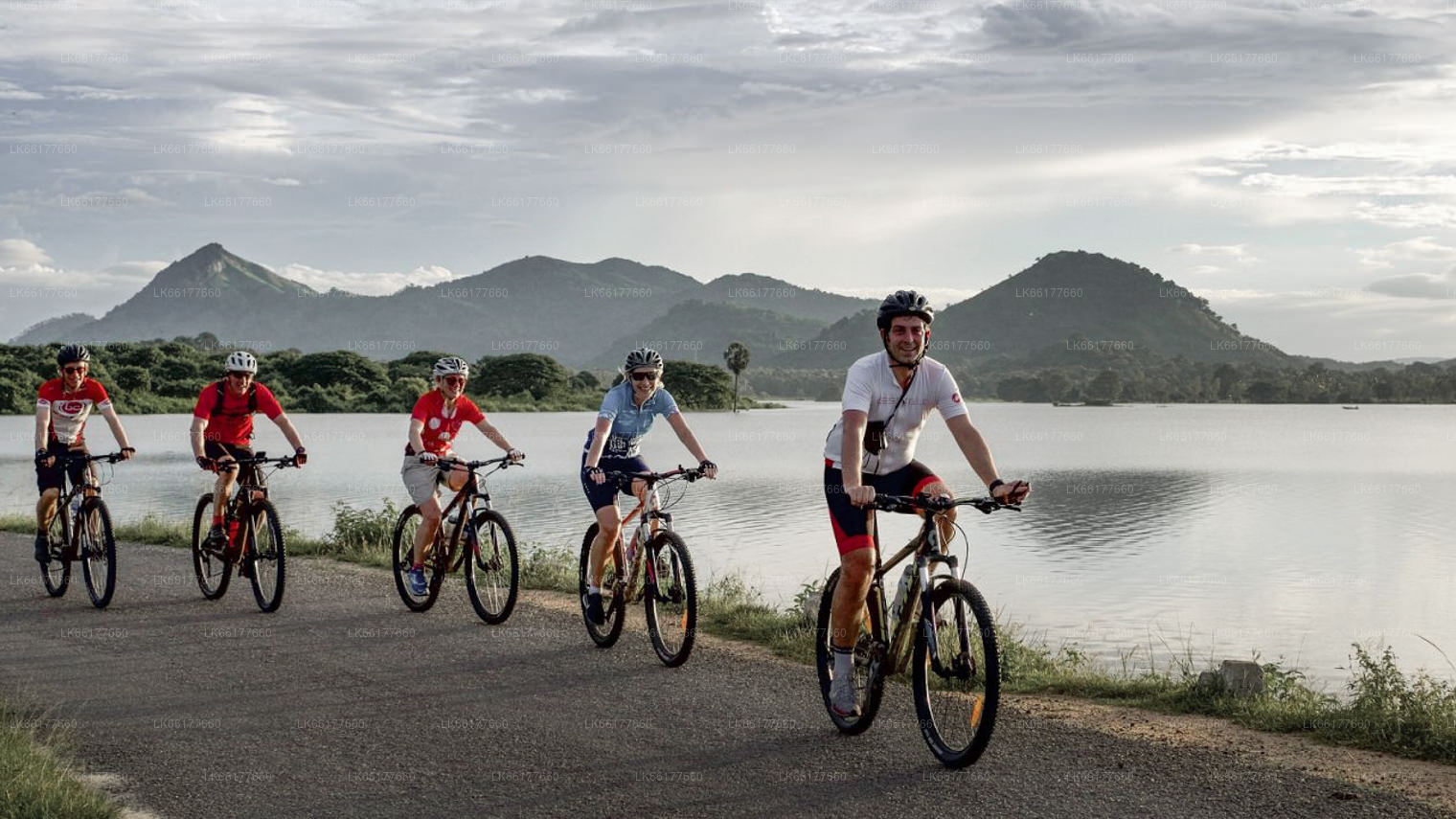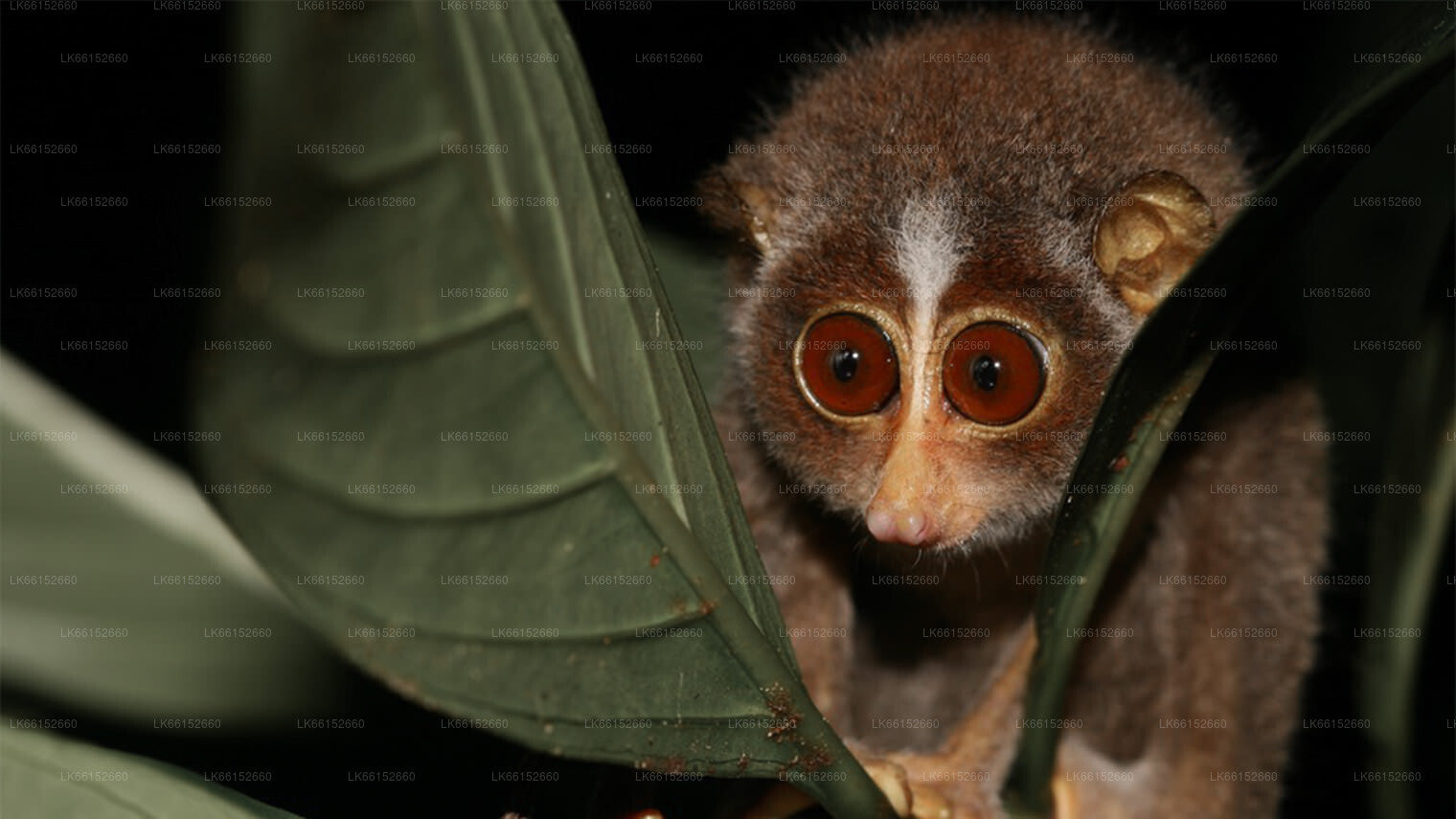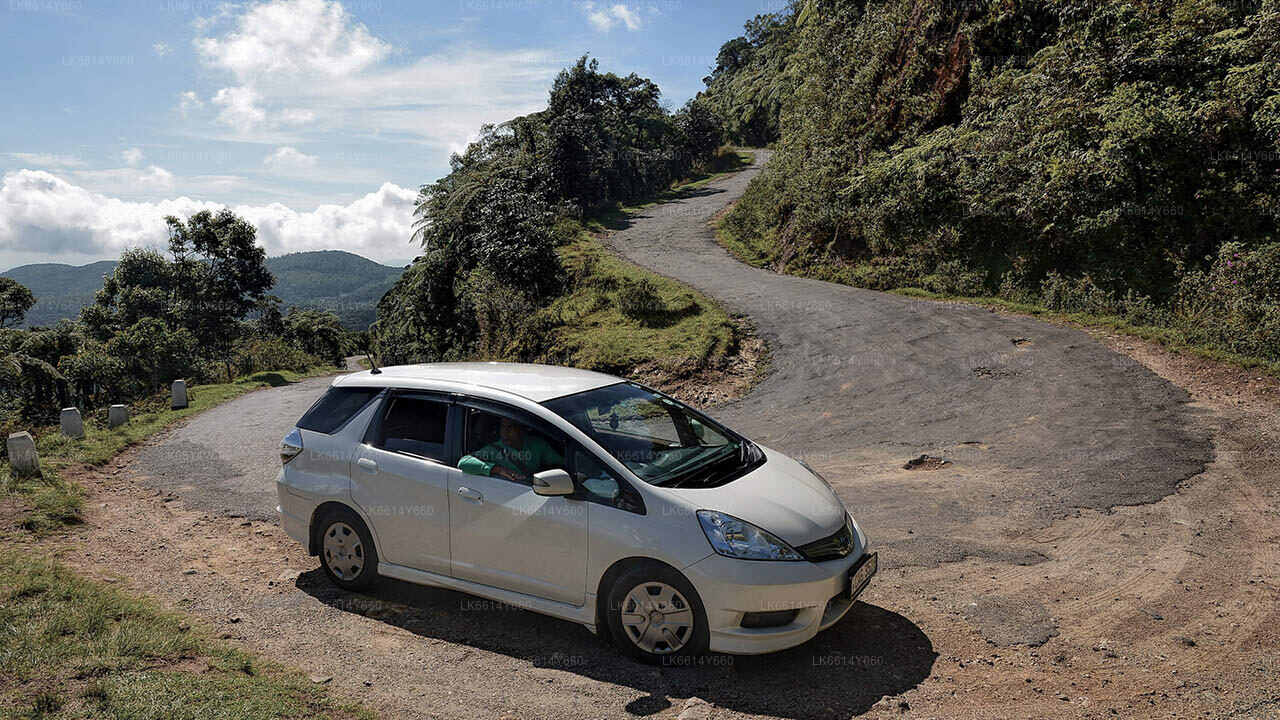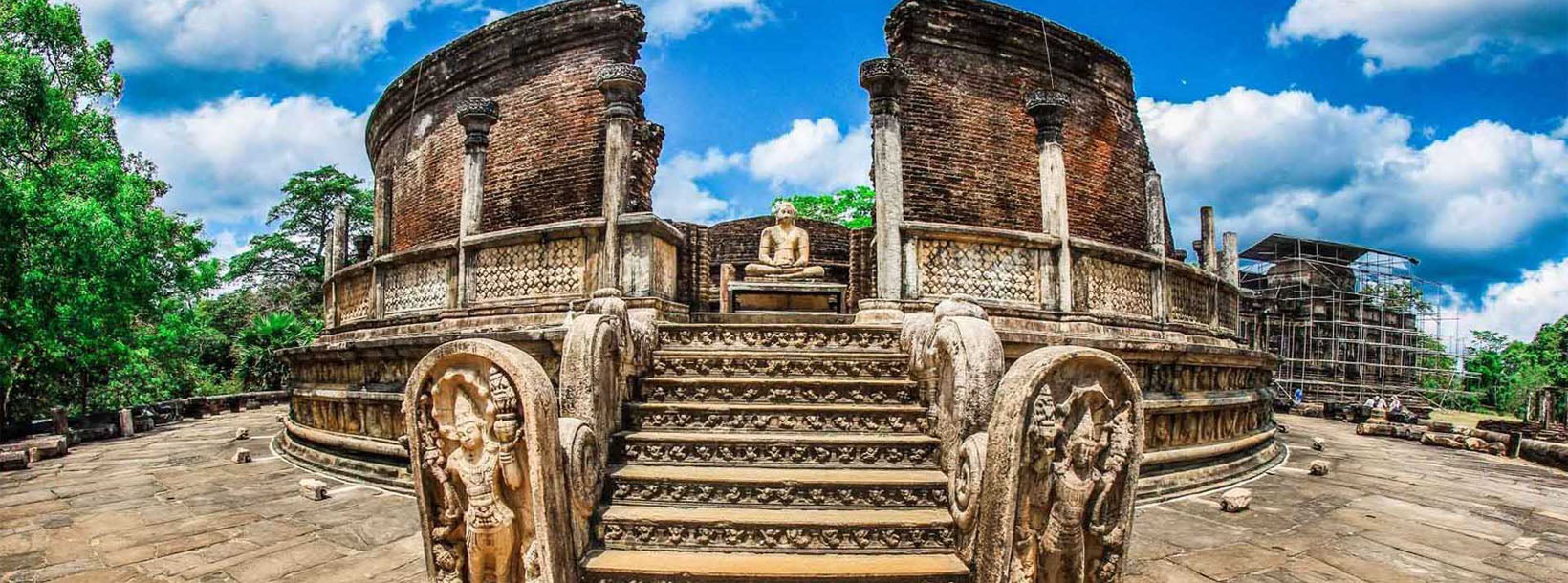
波隆纳鲁沃市
波隆纳鲁沃是斯里兰卡的联合国教科文组织世界遗产,曾是该国中世纪时期(11-13世纪)的首都。波隆纳鲁沃以其保存完好的遗址而闻名,其中包括标志性的加尔维哈拉(Gal Vihara)雕像,其建筑风格令人印象深刻,反映了古代僧伽罗文明的辉煌。
Sathmahal Prasada
Sathmahal Prasada in Sri Lanka: The Stepped Pyramid of Polonnaruwa
Sathmahal Prasada in Sri Lanka is a seven storied stepped pyramid located in an elevated area amongst the ancient city Polonnaruwa. The structure has entrances on all four sides and an additional staircase to reach the upper levels. It is believed to be built during the Polonnaruwa era, somewhere between the 11th and 13th century AD. However, no record exists of this pyramid, its builder or purpose.
The Seven Storied Palace is believed to be a stupa by some, due to its proximity to notable Buddhist ruins such as stupas, monasteries and etc. However the architecture is completely different and does not resemble any other ancient architecture in Sri Lanka. It is the only stepped pyramid in Sri Lanka and one of only four other ancient buildings with square bases, the others all being damaged stupas or monastic ruins in Anuradhapura. It is interesting to note that none of the other three buildings show signs of having been pyramids and all seem to have been squat in structure.
Sathmahal Prasada in Sri Lanka: Resemblance to Architectures beyond the Seas
Though it does not have comparative architecture in Sri Lanka itself, Sathmahal Prasada has similarities to the architecture of some cultures beyond the oceans.
• Stepped Pyramids are structures that use flat platforms or ‘steps’ in a receding order from ground up, to form a shape similar to a geometric pyramid. They are usually large and are built using several layers of stone.
• There are stepped pyramids found throughout history in many cultures and locations around the world.
• Interestingly enough, there were no firmly established connections between the different cultures.
• Sathmahal Prasada is most similar in structure (except for the staircase) to the Koh Ker temple and Baksei Chamkrong temple in Siem Reap, Cambodia (both are Shiva temples built around the 10th century AD), and on a smaller scale similar to the Mayan Temple of the Masks in Tikal, Gautemala and some other Mayan temples.
关于波隆纳鲁沃区
波隆纳鲁沃是斯里兰卡中北部省份的第二大城市。这座古城已被联合国教科文组织列为世界遗产。波隆纳鲁沃背后有着一段辉煌的征服与斗争历史,是文化三角区的第三大组成部分。波隆纳鲁沃位于康提东北约140公里处,拥有众多重要景点,为历史文化爱好者提供数小时的无尽乐趣。
现存的大部分遗迹都归功于帕拉克拉玛·巴胡一世国王,他投入了大量皇家资源用于城镇规划,包括公园、建筑、灌溉系统等等。他的统治时期被认为是王国的黄金时代,在这位富有远见的统治者的领导下,王国繁荣昌盛。帕拉克拉玛·萨穆德拉(Parakrama Samudra)是一个巨大的水池,以其赞助人的名字命名。备受人们喜爱的国王宫殿、周围环绕着精美石雕象的觐见厅以及浴池,都体现了当时卓越的工程技术。
关于北中部省
北中央省是斯里兰卡最大的省份,占全国土地总面积的16%。北中央省由波隆纳鲁沃区和阿努拉德普勒区两个区组成。阿努拉德普勒区是斯里兰卡最大的区,面积为7,128平方公里。
北中央省拥有巨大的潜力,投资者可以在此开展业务,尤其是在农业、农基工业和畜牧业领域。北中央省超过65%的人口依赖基础农业和农基工业。北中央省也被称为“Wew Bendi Rajje”,因为该省拥有3000多个中型和大型水库。Sri maha bodiya、Ruwanweli seya、Thuparama dageba、Abayagiri Monastry、Polonnaruwa Rankot wehera和Lankathilake等水库都值得一游。









